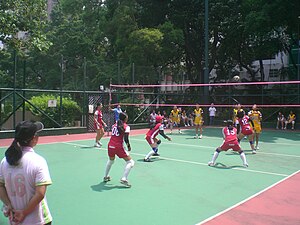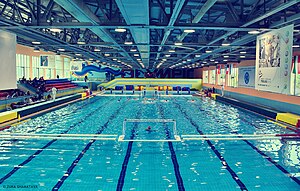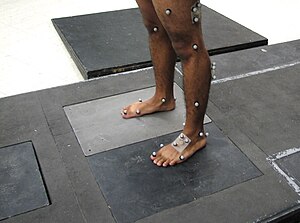 |
| (Photo credit: Wikipedia) |
There are an estimated thirty million participants in volleyball so shoe manufacturers have researched and spent lots of time in developing footwear that:
- Grips
- Supports
- Absorbs shock
Since the volleyball player spends most of the time on the balls of their feet or toes, support at the midsole is a must. Gel, liquid, air and foam are options that provide support and offer good energy return and rapid recovery. The best support comes from custom orthotics.
High top shoes are available and aid the player with weak ankles and at the same time help to prevent sprain injuries. For the student athlete who prefers low top shoes, an ankle brace may be an option to consider or Immobilization tapping.
As a volleyball player, the student athlete relies on a shoe that will keep him or her safe and maximize their performance. If the current shoes just aren’t cutting it, perhaps it’s time to retire them and select a shoe with the desired capabilities. A sports store that specializes in indoor court sports has sales staff available to guide you and make recommendations. They are also the best go to person for advice on fit. Purchase the athletic socks you will wear with the shoes and buy the shoes to accommodate both feet and socks. Shoes should not feel tight, if they do, move a half-size up. Consult with Dr. Bowman about correct shoes for any sport.
If after all this your student athlete sustains a sports injury, call Dr. Bowman at (713) 467-8886. His expertise as a former athlete can minimize lost time and get you back on the court. Online appointments are available at www.houstonfootspecialists.com
References:
http://www.livestrong.com/article/395899-what-type-of-shoes-do-you-need-for-volleyball
http://www.livestrong.com/article/392402-qualities-to-look-for-in-a-volleyball-shoe/























